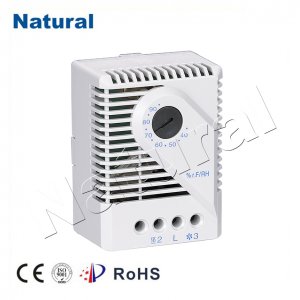Introduction

In the world of engineering and automation, temperature regulation plays a pivotal role in maintaining the stability and efficiency of various processes. Among the myriad devices used for this purpose, the mechanical temperature switch stands out as a reliable and time-tested solution. This article delves into the inner workings of the mechanical temperature switch, its applications, and its significance in modern industries. The Basics of the Mechanical Temperature Switch
The mechanical temperature switch, also known as a bimetallic switch, is a straightforward yet ingenious device designed to respond to changes in temperature. At its core, it consists of two different metals bonded together, each with a distinct coefficient of thermal expansion. As the temperature changes, the metals expand or contract at different rates, causing the bonded strip to bend. This bending action is used to trigger a mechanical response, often in the form of opening or closing an electrical circuit.
Operating Principle
The fundamental principle behind the mechanical temperature switch is differential thermal expansion. Typically, a bimetallic strip made of metals with dissimilar coefficients of expansion, such as brass and steel, is used. When exposed to temperature changes, one metal expands or contracts more than the other, leading to the strip bending in a predictable manner. This bending action can be calibrated to a specific temperature range by adjusting the composition of the metals or altering the strip's dimensions.
Applications in Various Industries
Mechanical temperature switches find applications across diverse industries due to their simplicity and reliability. In heating, ventilation, and air conditioning (HVAC) systems, these switches are often used to control fans, pumps, and heating elements. Industrial processes, such as manufacturing and food processing, benefit from mechanical temperature switches by ensuring equipment operates within safe temperature limits.
Automotive engines rely on these switches to monitor engine temperature and prevent overheating. Fire detection systems also utilize mechanical temperature switches to trigger alarms when a predefined temperature threshold is reached. Furthermore, they can be found in domestic appliances like irons, coffee makers, and toasters, contributing to user safety and device longevity.
Advantages and Limitations
Mechanical temperature switches offer several advantages. They are highly durable, have no need for external power sources, and are relatively inexpensive to produce. Their simple design makes them easy to install and maintain, and they can withstand harsh operating conditions.
However, these switches also have limitations. They tend to have a relatively lower level of accuracy compared to electronic temperature sensing methods. Their response time may be slower, and they might be less suitable for applications that require rapid temperature changes or fine-tuned control.
Conclusion
In the realm of temperature regulation, the mechanical temperature switch remains an essential and effective tool. Its ingenious use of differential thermal expansion to trigger mechanical actions has made it a cornerstone in various industries. From HVAC systems to automotive engines and beyond, these switches continue to demonstrate their reliability and robustness.
As technology advances, electronic temperature sensing methods may be gaining ground, but the mechanical temperature switch's enduring presence attests to its enduring value. Its simplicity, durability, and wide range of applications ensure that it will remain a crucial component in engineering solutions for years to come.
 28 items Patent
28 items Patent
 28 items Patent
28 items Patent
 28 items Patent
28 items Patent








